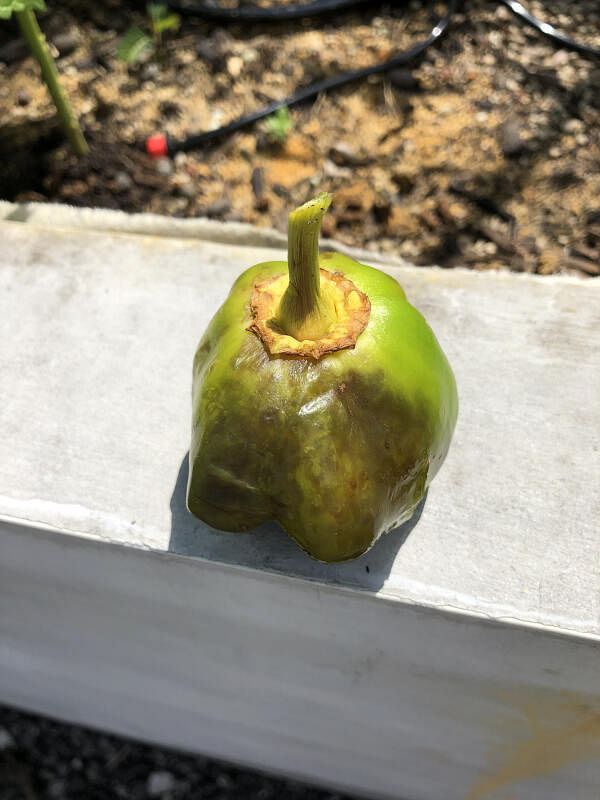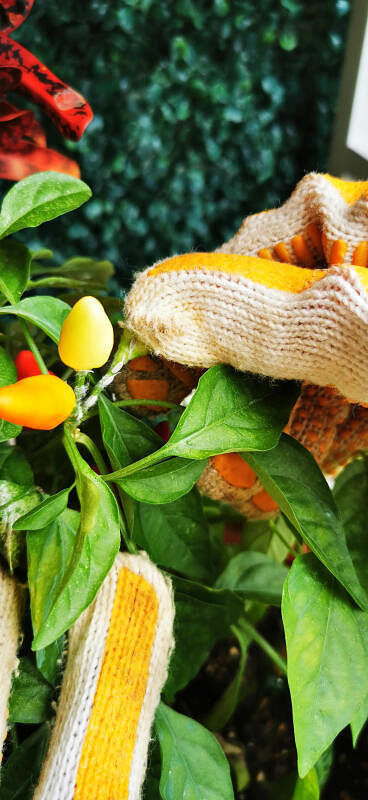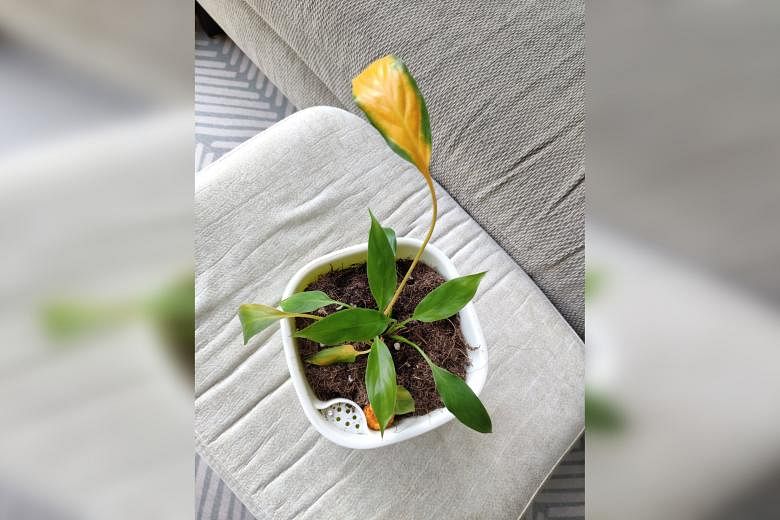Peace lily may need to be fed and watered more often
My peace lily is next to the window and receives four to five hours of direct sunlight daily. Occasionally, I give it some liquid fertiliser, based on recommended usage. The plant is watered once a week. After watering, some leaves turn yellow. What is wrong?
Tan Poh Keam
Under the light conditions described, your peace lily (botanical name: Spathiphyllum wallisii) will naturally become smaller, as will its leaves. The old leaves will be shed as new ones - which look quite healthy in the picture - replace them.
Even though you are using a self-watering pot, keep your growing medium moist at all times. If your plant dries out, it will wilt and older leaves will turn yellow and die.
The growing medium appears to be a soil-less mix which may retain nutrients well. You may need to feed your plant more often and use a formulation that contains the full range of nutrients it needs for healthy growth. You can use water-soluble fertilisers meant for growing vegetables hydroponically, whereby a small amount of the solution is placed in the self-watering pot's reservoir.
Plants may be pot-bound
I have been growing Eugenia trees in fibreglass planters for six years and they are not thriving. The leaf growth is patchy, roots are spilling out of the planters and leaves are dropping. Is there a way to help these trees thrive again? Alternatively, can you recommend some low-maintenance trees that thrive in pots and under direct sunlight, and grow up to 2m to 3m tall and do not shed leaves?
Michelle Tang
It appears that your Kelat Oil (botanical name: Syzygium myrtifolium) has grown and become pot-bound, meaning that there is insufficient space for the roots to grow. The nutrients have been exhausted and the plant's water needs are no longer being met.
Consider growing palm species such as the yellow cane palm (botanical name: Dypsis lutescens) - they can adapt to direct sunlight and do not shed leaves like shrubs.
As with most plants, however, it is important to accept that they will grow larger with time and there is a limited range of container sizes. You will need to change containers before the plants grow too big. To help your plants thrive, add organic matter periodically and manage the soil compaction.
Do note that it will be costly and difficult to remove your existing plants without damaging the planters.
Dogfennel may be toxic, needs more light

Why do the leaves of the dill plants I have propagated look different from those of the mother plant? The new leaves on the upper part of the plant look vastly different from the original leaves at the bottom (as circled in the picture). Also, the leaves on top taste bitter, whereas those at the bottom are not.
Tea Ann Lee
Your plant is botanically known as Eupatorium capillifolium or dogfennel. In Singapore, it is often mistaken for the dill plant (botanical name: Anethum graveolens). The two plants are not related.
Avoid consuming this plant. Dogfennel has been reported to contain alkaloids, which may be toxic as these compounds can affect liver function.
The varied appearance of the leaves could be due to the difference in light exposure. Lower leaves tend to be shaded by the canopy above and surrounding plants. As a result, they can start to look thin. Leaves that are exposed to more light normally secrete more phytochemicals and have a stronger odour or flavour.
Capsicum infested with fruit fly larvae

My capsicum plants have been fruiting in an allotment garden. Lately, the fruit have been dropping or turning rotten. Could this be due to the heavy rain or another problem?
Tony Hwang
Your capsicum fruit is probably infested with fruit fly larvae. The flying adults land on fruit and puncture the surface to lay eggs. Larvae that hatch from the eggs burrow into the fruit. Plants will then abort the infested fruits.
You can use a fruit fly trap made from a plastic bottle to lure and trap the pests. Refer to videos on the Internet to find out how to build such a trap.
You will need to test for the correct fruit fly pheromone to ensure the trap is effective in attracting the particular species that is affecting your plant.
Chilli plant infested with mealy bugs

My plant appears to have been infected. What should I do?
Jenny Liew
Your chilli plant (botanical name: Capsicum annuum) and other plants are infested with numerous mealy bugs, a sap-sucking pest. They may be covered in a sticky, cotton-like wax.
To reduce the number of pests, you can first use a jet of water or a soft toothbrush to remove them. Summer oil or castile soap solution can then be used to manage the remaining pests. These work by removing the white wax found on the mealy bugs and suffocating them.
Note that thorough coverage of the plant is required. Consistent, repeated applications are often needed to ensure all subsequent generations of the pest are eradicated.
Grow your plant under optimal conditions to reduce the likelihood of pest issues. Checking your plant regularly for pests can also help to nip issues in the bud.
- Answers by Dr Wilson Wong, an NParks-certified practising horticulturist, parks manager and ISA-certified arborist. He is the founder of Green Culture Singapore and an adjunct assistant professor (Food Science & Technology) at the National University of Singapore.
- Have a gardening query? E-mail it with clear, high-resolution pictures of at least 1MB, if any, and your full name to stlife@sph.com.sg. We reserve the right to edit and reject questions.

